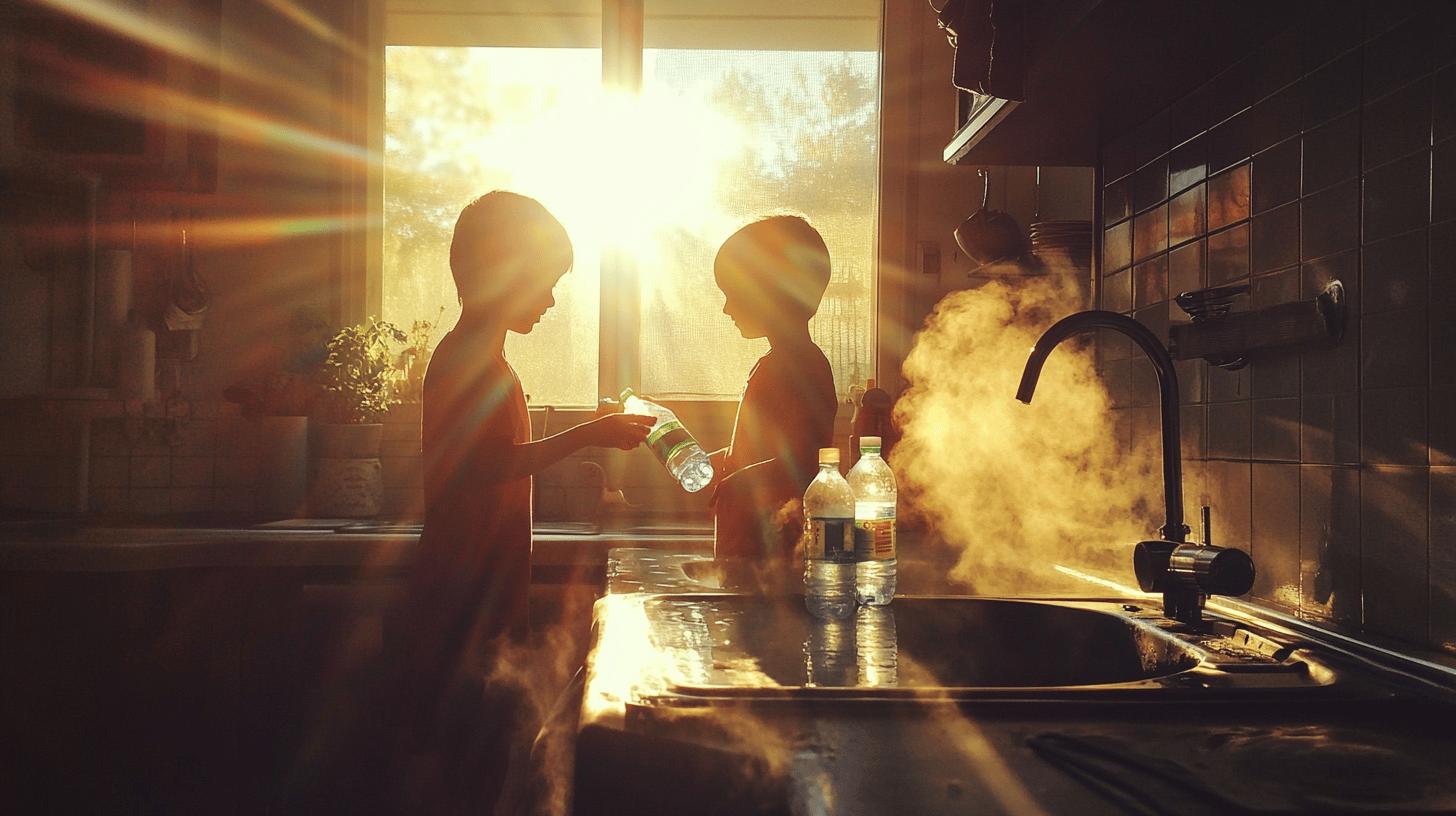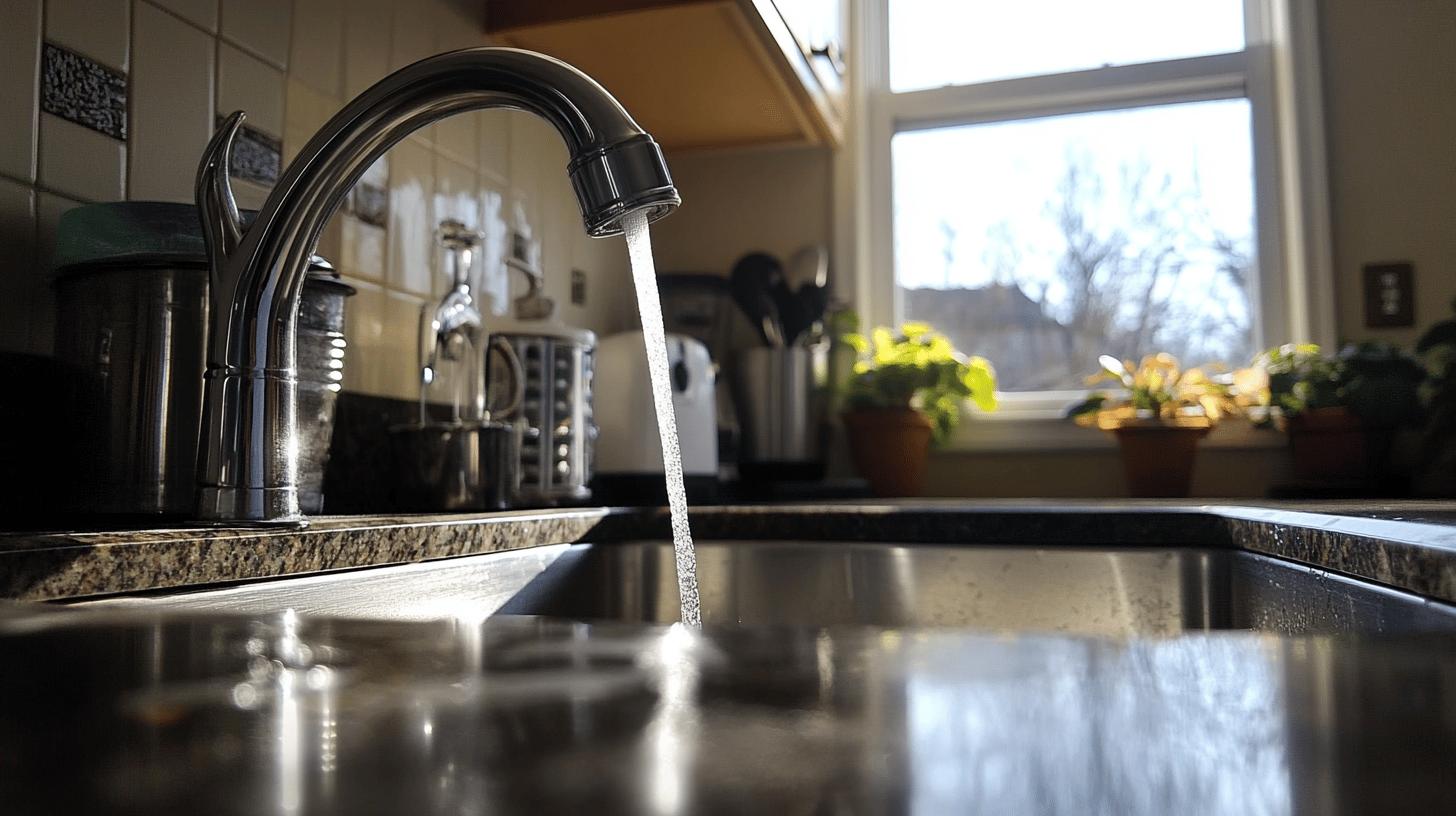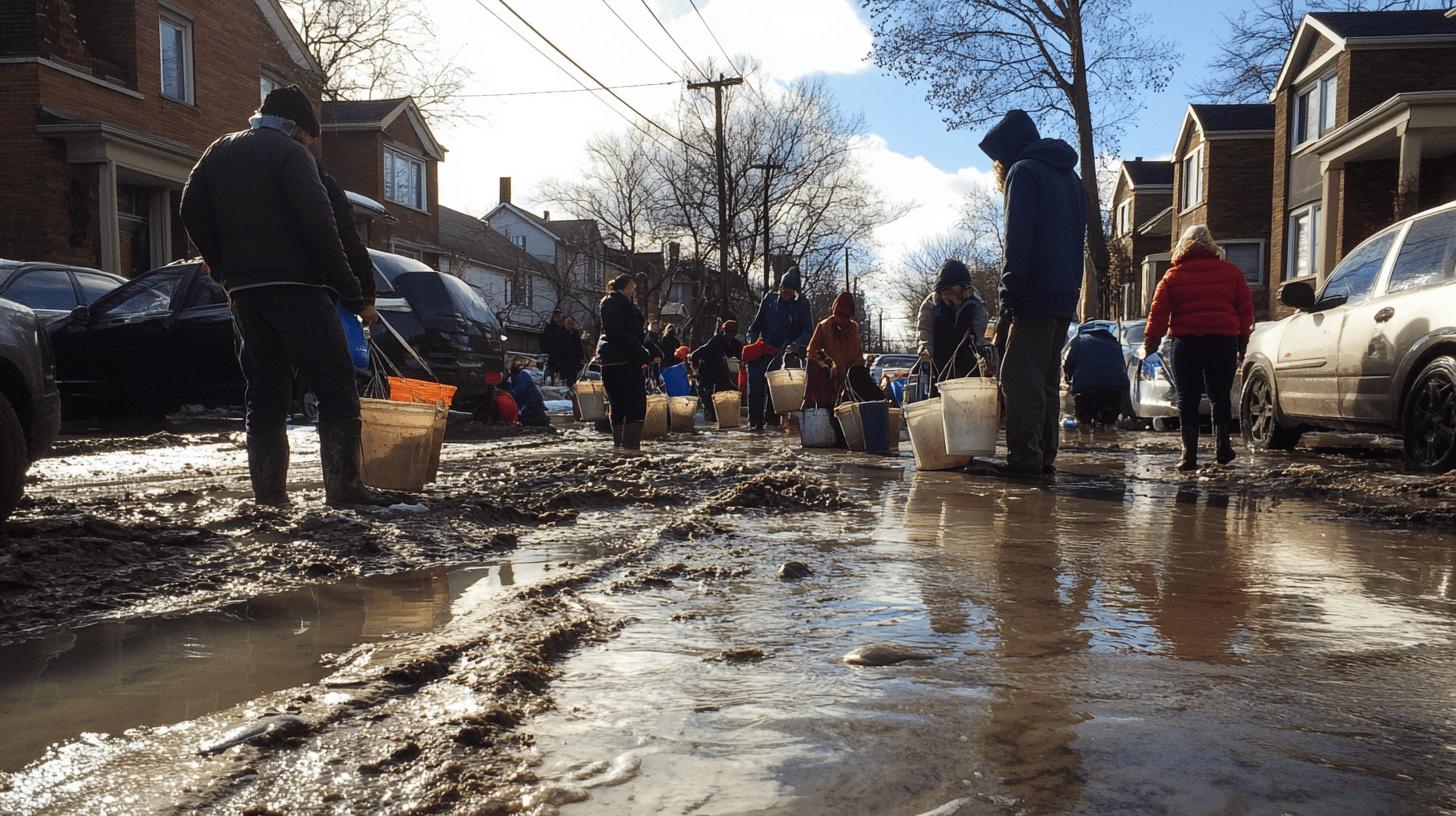TL;DR:
- Immediate Actions: Turn off water supply at the main shutoff valve. Report break to local water utility via hotline or online. Check for updates from utility.
- Safety Precautions: Avoid standing water; boil water for cooking/drinking for 1 minute or use bottled water. Minimize hot water use during showers.
- Document Damage: Take clear photos for insurance claims. Inspect basements and perimeters for moisture and structural damage.
- Restore Water Use: Run cold water until clear; avoid hot water initially.
- When to Call a Plumber: Hire for leaking main lines, low water pressure, high bills, visible damage, or shutoff valve guidance.
What if your morning coffee routine was suddenly thrown off by a water main break in your neighborhood? It can mess up your day, disrupt routines, and cause serious problems. Knowing what to do in a situation like this helps keep things under control and safe until the water’s back on. In this guide, you’ll learn quick steps for handling emergencies, safely using water, and dealing with any property damage. Ready to turn a crisis into calm? Let’s get started.
Immediate Steps to Take During a Water Main Break
If there’s a water main break, the first thing to do is shut off your water supply quickly. This step helps stop flooding and reduces damage. Knowing where your main shutoff valve is makes it easy to act fast, saving water and protecting your home.
Once the water is off, reach out to your local water utility. Use their hotline or website to report the break—acting fast speeds up their response. Giving them clear info on the break’s location and severity helps them decide what repairs are needed.
Online tools and hotlines make reporting easy, so use them to ensure your issue is logged quickly. Many utilities will keep you updated on whether it’s a water main break and how soon they can fix it.
Stay informed by checking for updates from your utility company, maybe through a system like 311. This helps confirm what’s going on and gives you repair timelines. Notifications may also alert you to safety steps like boil water advisories.
Steps to communicate with authorities:
- Report the break using hotlines or online tools.
- Reach out to local authorities with details.
- Monitor utility systems for updates and advisories.
Safety Precautions During a Water Main Break

Contaminated water from a water main break can be risky due to bacteria and chemicals. To stay safe, avoid any standing water, which might be mixed with sewage or other contaminants. Don’t go into flooded areas, as it can cause skin infections and other health issues.
If there’s a boil water advisory, follow your local water department’s advice. Boil water for at least one minute before drinking or cooking to kill harmful germs. Using bottled water is best until the advisory is over; this includes water for drinking, brushing teeth, and washing food.
For showering, use caution. Hot water tanks may get debris, so it’s best to avoid hot water at first. If you need to shower, keep it short and avoid too much contact with the water. Cold water is safer for basic cleaning, as it helps clear out dirt without affecting your hot water supply.
Safety tips during a boil water advisory:
- Boil water for at least one minute before use.
- Use bottled water for drinking and cooking.
- Avoid using hot water until systems are cleared.
- Minimize contact with water during showers.
Managing Property Damage and Insurance Claims
How do you document damage after a water main break? Start by taking clear photos of any property damage, both inside and out—like flooded basements, cracked foundations, or damaged landscaping. This visual evidence is essential for your insurance claim, making the process smoother and increasing your chance of compensation.
What areas should you inspect for damage? Focus on basements and around the home’s perimeter, as they’re often hit hardest by water damage. Look for moisture signs, like damp walls or floors, and check for cracks or shifts in the foundation. A thorough inspection can help you catch all potential damage and prevent future problems.
What is the process for filing an insurance claim? Contact your insurance provider right away to report the damage. They’ll guide you on what’s covered and what deductibles apply. You’ll likely need to submit documentation and might meet with an adjuster. Clear communication helps keep the claims process moving smoothly.
What broader impacts might a water main break have on the community? Expect traffic delays and road closures due to repair work, which may impact daily routines and access to your property. Staying updated through local news or alerts can help you plan around these disruptions.
| Step | Description |
|——————|——————————————————————-|
| Document Damage | Take clear photos of all damage for evidence. |
| Contact Insurance | Reach out to your provider to report the damage and discuss options. |
| File Claim | Submit the necessary documentation and meet any required adjuster. |
| Follow Up | Stay in contact with your provider to ensure the claim is processed. |
Restoring Normal Water Use After a Break

How do you clear debris from water lines after service resumes? Run cold water from all sinks and faucets until it flows clear. This flushes out any dirt or debris that might have entered the lines during the break. It’s essential to make sure the water is clear before using it for drinking or cooking.
Why check water quality and local advisories after a break? Local authorities may issue advisories like boil water notices to ensure safety. Following these guidelines helps you avoid health risks from potentially contaminated water.
What precautions should you take with household water systems post-break? Avoid using hot water initially, as debris could clog the hot water tank. Once cold water runs clear, you can gradually reintroduce hot water use. If you notice unusual water color or odor, report it to your utility provider. These steps help restore safe water use throughout your home.
Steps for ensuring water quality restoration:
- Run cold water in all faucets until clear.
- Avoid using hot water initially.
- Check local advisories for safety updates.
- Report unusual water appearance or smell.
Professional Help and When to Call a Plumber
When should you hire a professional plumber? For complex repairs like sewer or water main projects, a professional is key. They handle every step, ensuring correct repairs that prevent future issues and provide long-term solutions.
What are common reasons to call a plumber? If you have a leaking main water line, it’s best to get help right away to prevent water waste and property damage. A plumber can also guide you on emergency shutoffs if you’re unfamiliar. Persistent low water pressure, unexpected high water bills, or visible water damage are all signs it’s time for a professional inspection.
Scenarios requiring professional plumber assistance:
- Leaking main water line
- Persistent low water pressure
- Unexplained high water bills
- Visible signs of water damage
- Assistance with emergency shutoff valves
Final Words
Taking quick action during a water main break is key. Start by shutting off your water and contacting local utilities to help limit damage. Using hotlines or online tools speeds up the process, and staying updated with notifications keeps you informed on safety steps.
Avoid contaminated areas and follow boil water advisories to stay safe. For any property damage, document everything for insurance claims to support your recovery. Once service resumes, flush out lines and check any quality updates before regular use.
For more complicated issues, a professional plumber can handle repairs safely and efficiently. These steps can help you protect your home and keep things under control during a water main break.
FAQ
Who is responsible for a water main break?
A: The responsibility for a water main break often lies with the local water utility company. Homeowners, however, must report issues and assess property damages for personal insurance purposes.
What to do during a water main break outside?
A: During a water main break, turn off your water supply to prevent further flooding. Report the break to your local water utility company using available hotlines or reporting tools.
How long does it take to fix a water main break?
A: The time to repair a water main break varies, ranging from a few hours to several days, depending on the severity and complexity of the issue.
What happens if you drink water after a water main break?
A: Drinking water after a main break may risk contamination. Follow boil water advisories and use bottled water for safety until told otherwise by authorities.
Do you have to boil water after a water main break?
A: Yes, boiling water is recommended if advised by local authorities. It’s essential to ensure water is safe to avoid contaminants affecting your health.
Is it safe to shower during a water main break?
A: It is generally advised to avoid showering during a water main break until water is deemed safe, as contamination risks are possible.
How long should you run your water after a water main break?
A: After service restoration, run cold taps for several minutes until water is clear. This ensures any lingering debris is flushed from the system.
Can you flush during a water main break?
A: Flushing toilets may be possible, but check guidelines from local utilities, as restrictions might be in place during a break for safety.
What happens when a main water line breaks?
A: When a main water line breaks, it can cause flooding, road closures, and interrupted water service, requiring immediate intervention by utility companies.
What happens when a water main breaks?
A: A water main break can lead to significant water loss, property damage, and potential water contamination, necessitating quick reaction and repairs.
How to ensure safety during a water main break?
A: To ensure safety, avoid contact with possibly contaminated water, adhere to boil water advisories, and use bottled water until further instructions from officials.

